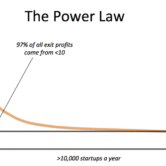
Why Most Startups Fail at Fundraising (And How to Avoid It)
By Upstart Experts
80% of startups fail. And for most, it’s not because they didn’t have a great idea—it’s because they ran out of money. Fundraising isn’t just about having a solid pitch; it’s about being truly investor-ready.
Here’s the hard truth: investors don’t fund ideas. They fund businesses that prove they can grow, scale, and make money. Yet, so many founders approach fundraising the wrong way—pitching too soon, targeting the wrong investors, or failing to tell a compelling story. And the result? Rejection after rejection.
But that doesn’t have to be your story. In this guide, we’ll break down the most common fundraising mistakes and, more importantly, how you can avoid them. Get ready to shift your approach and raise the capital your startup deserves.
Mistake #1: Pitching Before You’re Ready
What Goes Wrong:
- No real market validation—just assumptions.
- A business model that looks good on paper but hasn’t been tested.
- Weak or no traction—meaning no proof people actually want the product.
Fix It:
- Prove demand. Conduct surveys, get pre-orders, or land your first paying customers. Data beats opinions.
- Show traction. Revenue, user growth, partnerships, media coverage—any signal that your startup is gaining momentum.
- Be scalable. Investors want to see a business model that can grow without costs scaling at the same rate.
Investors take just a few minutes to decide if you’re worth considering. Don’t waste that window.
Mistake #2: A Weak, Forgettable Pitch Deck
What Goes Wrong:
- Too long. If your deck is over 12 slides, you’re already losing attention.
- No clear story. Numbers alone don’t inspire confidence—clarity and a compelling narrative do.
- Generic content. Every slide should deliver value, not filler.
Fix It:
- Keep it tight and impactful (10-12 slides max).
- Cover the essentials: problem, solution, market, business model, traction, and financials.
- Make it visual. A cluttered wall of text is an instant turnoff.
Example: Airbnb’s legendary 12-slide pitch deck helped raise $600,000. It was clear, concise, and investor-friendly.
Mistake #3: Pitching to the Wrong Investors
What Goes Wrong:
- Targeting investors who don’t fund your industry or startup stage.
- Relying on cold outreach with generic pitches.
- Overlooking investors who bring strategic value, not just money.
Fix It:
- Research before reaching out. Check Crunchbase, LinkedIn, and AngelList to see who invests in startups like yours.
- Get warm introductions. Network with other founders, attend events, and use mutual connections.
- Seek smart money. Look for investors who can open doors, provide guidance, and help you scale.
Mistake #4: Unrealistic Valuations & Poor Financials
What Goes Wrong:
- Overinflated valuation with no real basis.
- Unrealistic revenue projections (“We’ll hit $10M ARR in year one!”).
- Poor understanding of key metrics like CAC, LTV, burn rate, and runway.
Fix It:
- Benchmark your valuation. Compare with similar startups at your stage and industry.
- Be conservative with projections. Growth estimates should be data-driven, not wishful thinking.
- Master your financials. Investors will test you. If you stumble on basic numbers, they’ll walk.
Mistake #5: Bad Negotiation & Deal Terms
What Goes Wrong:
- Giving away too much equity too soon.
- Not understanding deal terms like liquidation preferences and dilution.
- Rushing into a deal without legal review.
Fix It:
- Negotiate smartly. The highest valuation isn’t always the best deal. Consider long-term implications.
- Understand key terms. Know the difference between equity, SAFE notes, convertible debt, and other funding structures.
- Get a lawyer involved. A simple clause in a term sheet can make or break your company down the line.
Final Thoughts: Fundraising is a Process, Not an Event
Most startups fail at fundraising not because they don’t have potential, but because they don’t prepare properly. But the good news? Every mistake is avoidable.
What to Do Next:
- Assess your investor-readiness. Do you have real traction, a scalable model, and a solid pitch?
- Create a strategy. Target the right investors, refine your messaging, and build relationships early.
- Get expert guidance. Programs like Upstart help founders craft winning fundraising strategies and connect with top investors.
Ready to fundraise the right way? Apply to Upstart today.
At Upstart, we help founders raise capital with confidence—offering expert coaching, investor connections, and fundraising strategies that work. If you’re ready to fundraise the right way, apply to Upstart today!
🚀 Your startup deserves innovative funding. Let’s make it happen. We’d love to hear about your fundraising journey. Share your experiences or ask questions in the comments below!
Which of these mistakes do you see the most? Drop your thoughts below.





